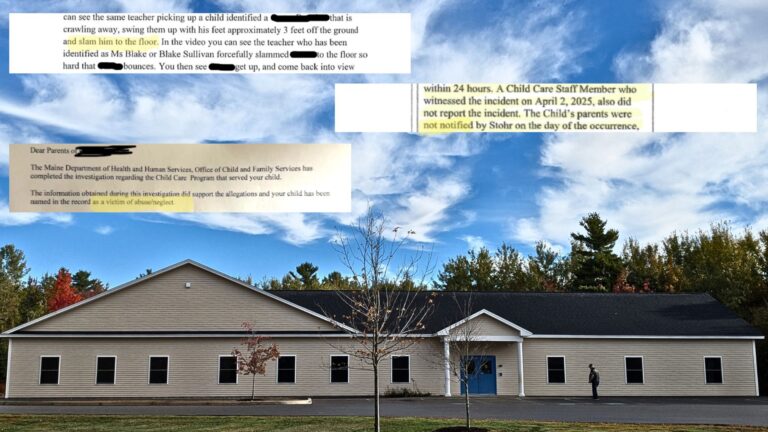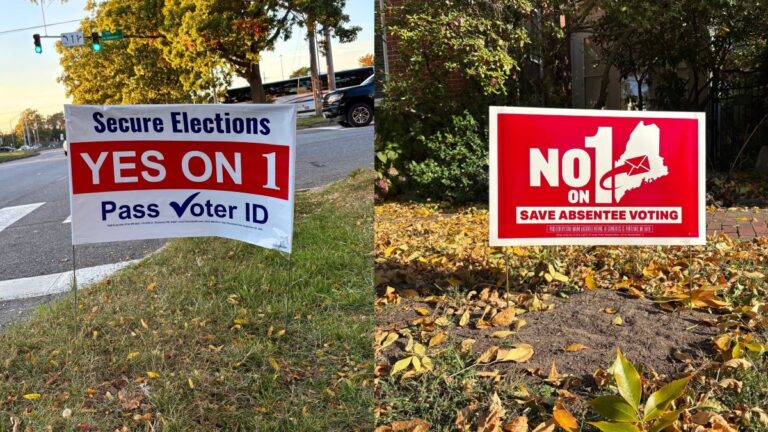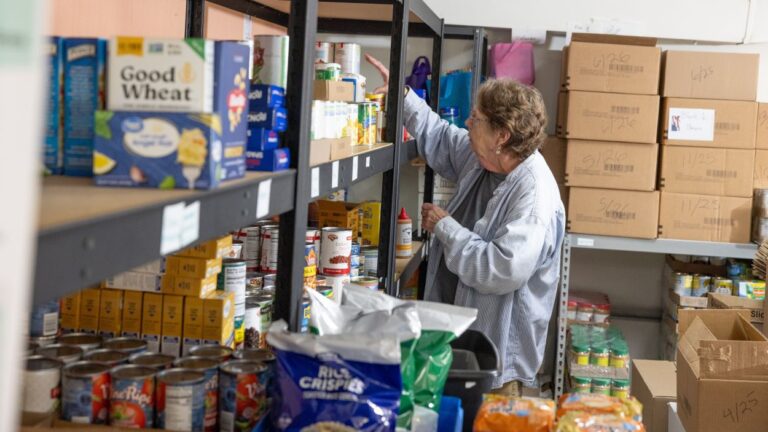For as long as Ralph Harder has lived in Auburn — more than 35 years — he has been able to recycle, setting his discarded cardboard, milk jugs and salsa jars in a bin on the sidewalk for pickup, confident they’ll be baled, crushed and remade into more cardboard, more milk jugs and more glass jars.
Come June, those bins will be no longer: Earlier this month the City Council voted unanimously to cut Auburn’s recycling program, arguing it was costly and underused, with recycling rates of around 12%, according to the Maine Department of Environmental Protection.
Recycling disposal fees sometimes run more than three times what the city pays for waste to be burned at the Maine Waste-to-Energy plant, just outside the city center.
Rural recycling programs have struggled for years, but the news that Maine’s fifth-largest city, less than 45 minutes from Portland, can’t keep a curbside recycling program afloat caused hand-wringing among residents and advocates.
“Everyone was surprised,” said Harder, a member of a committee tasked with finding ways to improve the program when the council threatened to cut it in 2019.
The decision blindsided residents and committee members, who say the solutions they proposed — educating residents, better tracking of participation rates, dedicated bins — were never implemented, and they were not contacted about the council’s decision. The city did implement one of the group’s recommendations for a composting program in 2021. (Organics like food and yard scraps typically make up between 30 and 40% of the waste stream, so diverting those can make a big difference.)
If the budget is finalized later this month, curbside recycling will end in June, said Dan Goyette, the public services director, although he emphasized that residents can still bring recyclable material to bins outside Maine Waste-to-Energy.
So does the end of curbside recycling in Auburn mean other towns are likely to follow suit? Possibly, although the situation there is somewhat unique. The city’s fees to dispose of trash are unusually low — $42 per ton, compared to more than $100 per ton in other communities The Maine Monitor surveyed — in part because the city is home to the incineration plant, where trash is burned to make electricity.
That makes paying so much more for recycling particularly unappealing. But municipalities around the state are struggling with historic tax increases and rising costs, which may mean programs in other towns — particularly in rural areas with low participation rates that have to truck materials far away — are at risk.
Towns across the state struggle to keep programs alive
The list of Maine towns that have slashed recycling programs in recent years is long. Lincoln County Recycling, which takes in material from 19 towns, cut back on plastics and now takes only No. 2. Ellsworth stopped taking glass, boxboard and several types of plastic. Kennebunkport and Bradley cut curbside service (it has since been reinstated in Kennebunkport). A nonprofit offering recycling in Hancock County shut its doors entirely. Unity stopped accepting most plastics. Gouldsboro, Winter Harbor and Trenton stopped recycling altogether. Towns in central and eastern Maine have had particular trouble keeping recycling going while they’ve waited for years for a promised plant in Hampden to open.
Even that list is likely an undercount because data on recycling programs in Maine is notoriously spotty, as the Monitor reported in 2021. Of the nearly 500 municipalities surveyed by the DEP that year, fewer than 150 reported back.
Eighty-five percent of those that did return surveys in 2019-20 had a recycling program, said Elena Bertocci, an environmental specialist with the DEP. Few had curbside pickup; most require residents to drop their recycling off at a transfer station.
“We suspect that municipalities without programs are less likely to report,” said Bertocci in an email. “I’m afraid that compliance with municipal recycling reports is spotty due to resource limitations at municipalities and DEP, so we do not have reliable numbers on the number of existing municipal recycling programs or the number of programs that have been canceled in recent years.”
Once a community loses its program — or changes it significantly — and residents get out of the habit of recycling or lose faith that materials are truly being recycled, it can be very difficult to get them back into it. Teaching people how to properly recycle takes time, said Matt Grondin, communications director for ecomaine, which has full-time staff dedicated to making sure recyclers are putting the right materials in the bin. “It’s a huge piece of it.”
If a bin full of recycling is contaminated — items are dirty with food waste, or residents are “wish-cycling” — putting items into the bin thinking or hoping they’re recyclable, even if they aren’t – those materials have to be taken out of the stream. That takes time and money, so companies often simply throw away the entire contaminated load.
High contamination rates that resulted in material being landfilled was one of the reasons given for ending the curbside program in Auburn, although that was disputed by Casella spokesperson Jeff Weld, who said the city “has a low contamination percentage based on the material that we see come to our recycling facility in Lewiston.”
Dirty recycling is still a problem. High contamination rates led China to ban the import of most plastics and other materials in 2018, throwing a wrench into the global recycling market. (Experts say recycling markets have since recovered, although they’re still cyclical.) That same year, ecomaine’s paper and plastics recycling program was jeopardized by residents tossing everything from sneakers to snowblowers into the recycling bin, prompting the nonprofit to send staff into communities to tag bins of repeat offenders.
EPR, federal changes offer hope
The state’s patchwork of recycling programs, for which municipalities bear the brunt of the costs, are vulnerable to a constantly shifting market. Fees to collect and process recycling change month to month, and some communities have seen them double or triple in less than a year.
“Recycling has always been promoted as good for the environment,” said Mark Draper, solid waste director for Aroostook Waste Solutions, a nonprofit that manages waste for 15 northern Maine communities. “Nobody would ever argue that. But it’s a program that is highly dependent on businesses to buy the raw material we’re selling.”
Aroostook Waste Solutions charges a single fee – currently $105 per ton – for both trash and recycling, as both are sorted and processed at the same place and costs are shared. For that reason, Draper couldn’t say whether the organization loses money on recycling, although he suspects that certain items — like aluminum — are simply not profitable.
“It’s a costly program to be driving all around the county picking up tin cans,” said Draper. But recycling is important to residents, so the organization decided to keep its program “whether we’re making money or not.”
“This is why we need EPR for packaging,” said Sarah Nichols, a waste policy expert with the Natural Resources Council of Maine, which championed the legislation. “Towns are put in this position where it’s hard for them to justify spending money on something if disposal is so much cheaper than recycling.”
Advocates and companies are urging towns to hang on, saying costs are likely to come down as new markets open and the state implements a reimbursement program for municipalities as part of a law passed last year.
The Biden administration’s emphasis on “buy American” in the infrastructure bill is likely to increase demand for paper, cardboard and plastic, said Grondin, of ecomaine, and new plants are coming online to take those materials.
“It’ll be easier for communities who have stayed the course with recycling to be in position to respond to that demand than for those who have eliminated recycling programs.”
Grondin and others also hope that Maine’s Extended Producer Responsibility for Packaging law will help stabilize the landscape. The law, in the rulemaking stages, is aimed at slowing production at the source by charging large companies for the plastic they introduce into the state.
Some of the money that’s collected will be sent back to communities to help them weather market changes and stay consistent in what they collect for recycling. Experts say municipalities can expect money to arrive in 2027 for costs incurred in 2026.
“Abandoning these programs now might result in short-term cost savings that would potentially be offset in the long term,” said Weld, of Casella, which manages trash and recycling collection for Auburn.
Burning trash to produce electricity, which is below recycling on Maine’s waste hierarchy but above landfilling, also has a role to play, and the situation in Auburn has sparked a debate about what is more sustainable. European Union countries, often hailed as a model for waste diversion, also rely heavily on waste-to-energy plants, with many burning nearly half the trash they produce.
Plus, advocates argue, while it might save money from one year to the next, landfilling is more expensive in the long run, particularly with closure and water treatment costs that can continue forever.
Shutting down a landfill is expensive — Rockland estimates the cost of closing its quarry landfill, which was used for more than a century, could run to $4.5 million. Closed landfills must be frequently monitored to make sure they aren’t leaching toxins into the environment, and runoff from them is treated in perpetuity.
“When we’re looking long term,” said Grondin, of ecomaine, “recycling is both environmentally and economically responsible.”







